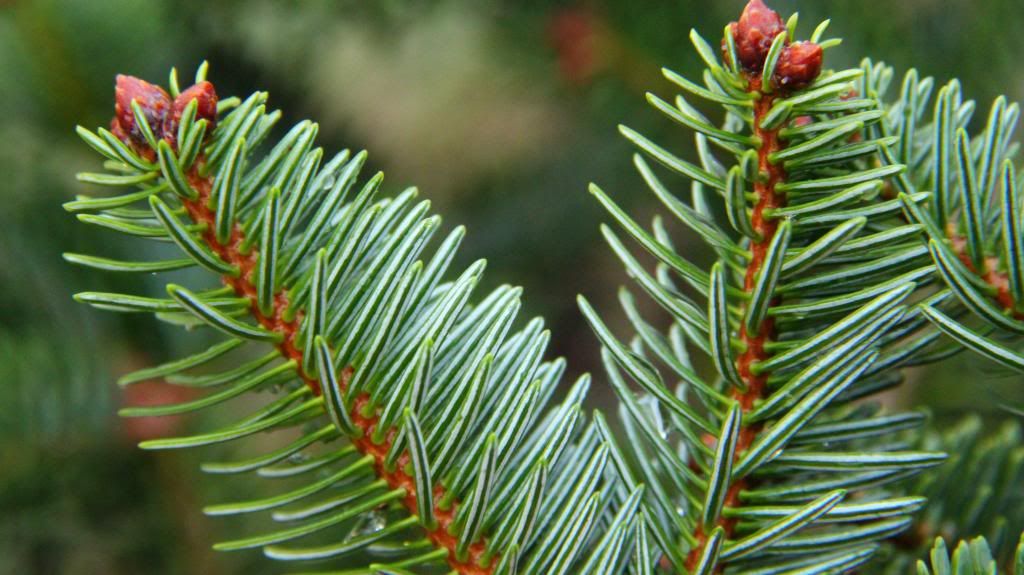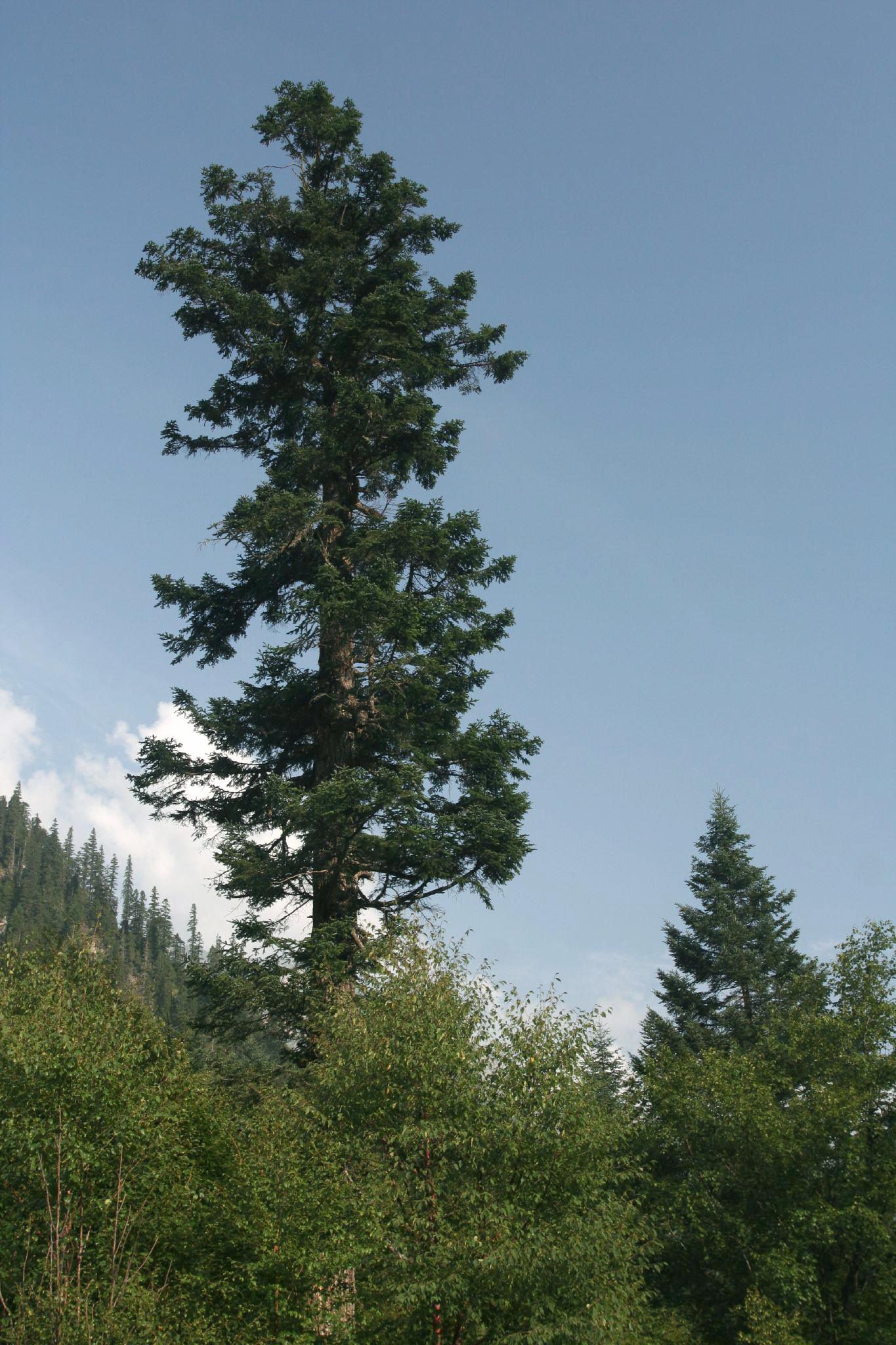Abies fargesii
Farges Fir ( Abies fargesii )
Farges Fir ( Abies fargesii ) is a medium sized coniferous tree of the genus fir in the family Pinaceae. Its distribution area is located in China.
Description
Farges fir is up to 40 meters tall with a diameter at breast height of 1.5 to 2 meters and a pyramidal to conical crown. It has a reddish-brown to reddish- gray, rough and scaly bark. Young twigs are purple or purple-brown and red and furrowed slightly in the second year. Weak branches are covered with reddish-brown hair. The buds are oval to conical, purple and strong resinous. The needles are in two or more rows and are more or less horizontal stand-off. They are 1.0 to 2.5 inches long and 2.5 mm wide and are about twice as long as on the top side to the underside of the branches. The needles are rounded and emarginate to bicuspid and have two resin canals. The Needles are glossy dark green, the underside shows two white stomatal bands from each of nine to ten lines.
Male cones are yellowish with red sporophylls. They are cylindrical, 13 mm long and 5 mm wide. The female cones are ovate to ovate - cylindrical, 5 to 8 inches long and 3 inches wide. They are initially violet purple and dark purple when ripe, to reddish brown. The scales are kidney-shaped and fan-shaped, kidney-shaped in the center of the stud. The bracts protrude slightly and are straight or folded. The seeds have a wedge-shaped wings.
Distribution and ecology
The natural range of Farges Fir located in China in the provinces of Gansu, Hubei, Shaanxi and Sichuan. Where it grows in biodiversity-rich forests and copses on fresh to moist, acidic to neutral, sandy to loamy humus - rich soils in full sun to light shade locations. It is frost -sensitive and heat -loving. They are found at altitudes 1500-3900 meters. It forms pure stands or they are found together with other conifers, such as with the Shensi Fir ( Abies chensiensis ), the Min- fir ( Abies recurvata ), the purple - Spruce ( Picea purpurea), the bristles spruce (Picea asperata ) Picea neoveitchii, the Sargent - spruce ( Picea brachytyla ), Larix potaninii, the Taiwan Hemlock ( Tsuga chinensis) and the Chinese yew ( Taxus chinensis). In addition, there are often different types of birch (Betula ) and poplars (Populus ) and as shrubs species of barberry (Berberis ), the Zwergmispeln ( Cotoneaster ), the currants (Ribes ), Rhododendron species and Spier shrubs ( Spiraea ).
In the IUCN Red List Farges fir will be listed as endangered ( " Lower Risk / least concern "). It is noted, however, that a re-evaluation of risks is required.
Systematics and history of research
Farges Fir ( Abies fargesii ) is a species of the genus fir (Abies ) in the pine family ( Pinaceae ). It is assigned to the section Pseudopicea. It was first described by Adrien René Franchet 1899. From the nominate Abies fargesii var fargesii the variety Abies is fargesii var faxoniana (synonym: Abies faxoniana ) distinguished. In addition, another variety is Abies fargesii var sutchuenensis (synonym: Abies sutchuenensis ), whose status is unclear. The species very similar to Abies fanjingshanensis could also constitute only a variety of Farges fir.
The specific epithet refers to the French clergy fargesii PG Farges, who has found the way in 1893.
Use
Fir wood of Farges is used for the manufacture of lumber, furniture and wood pulp.









